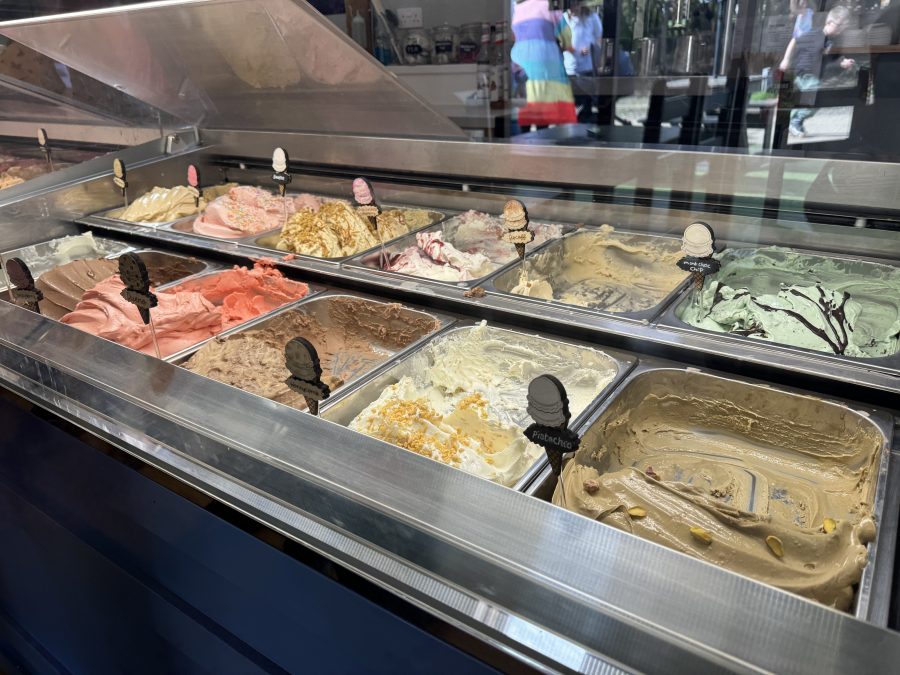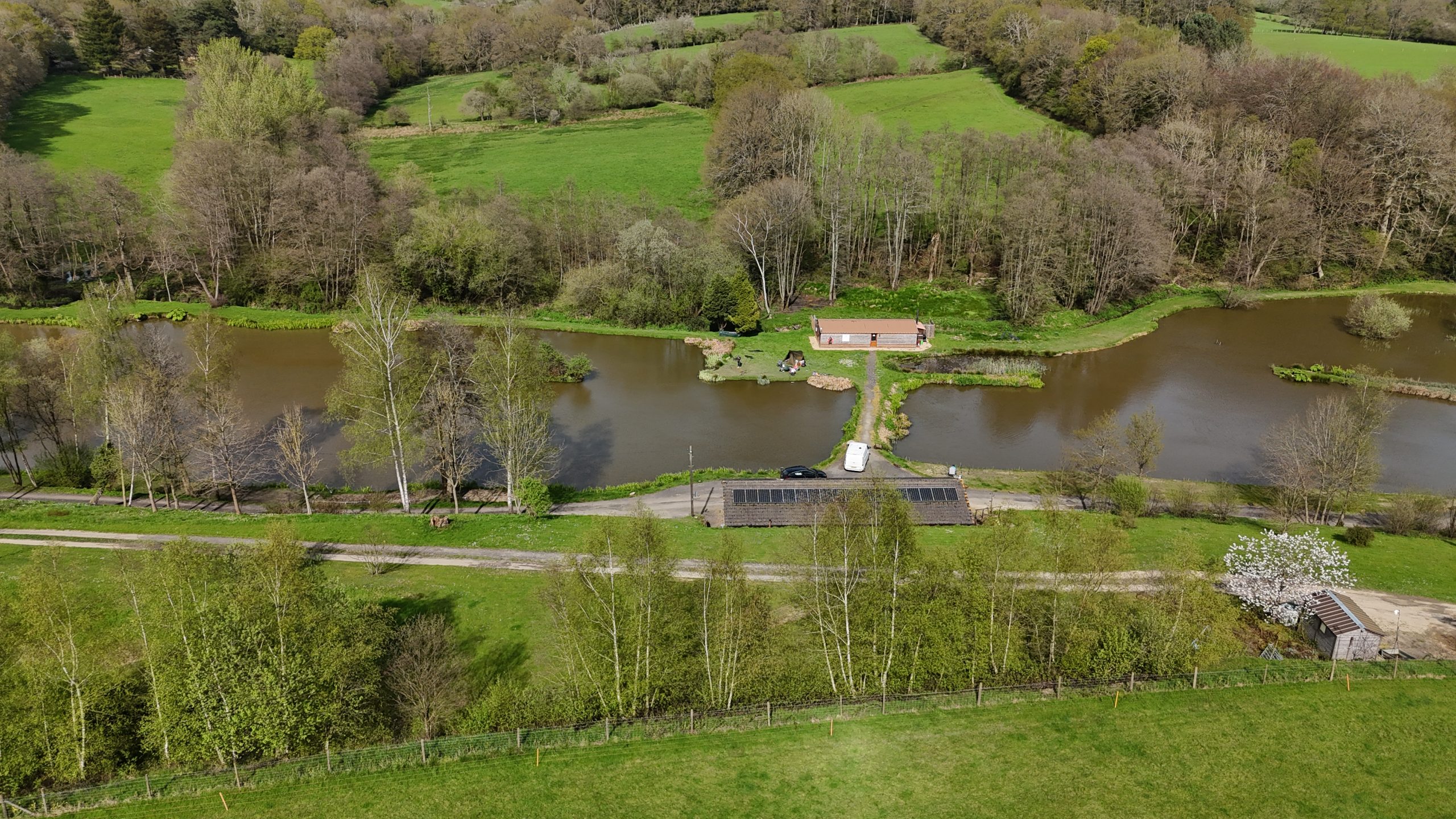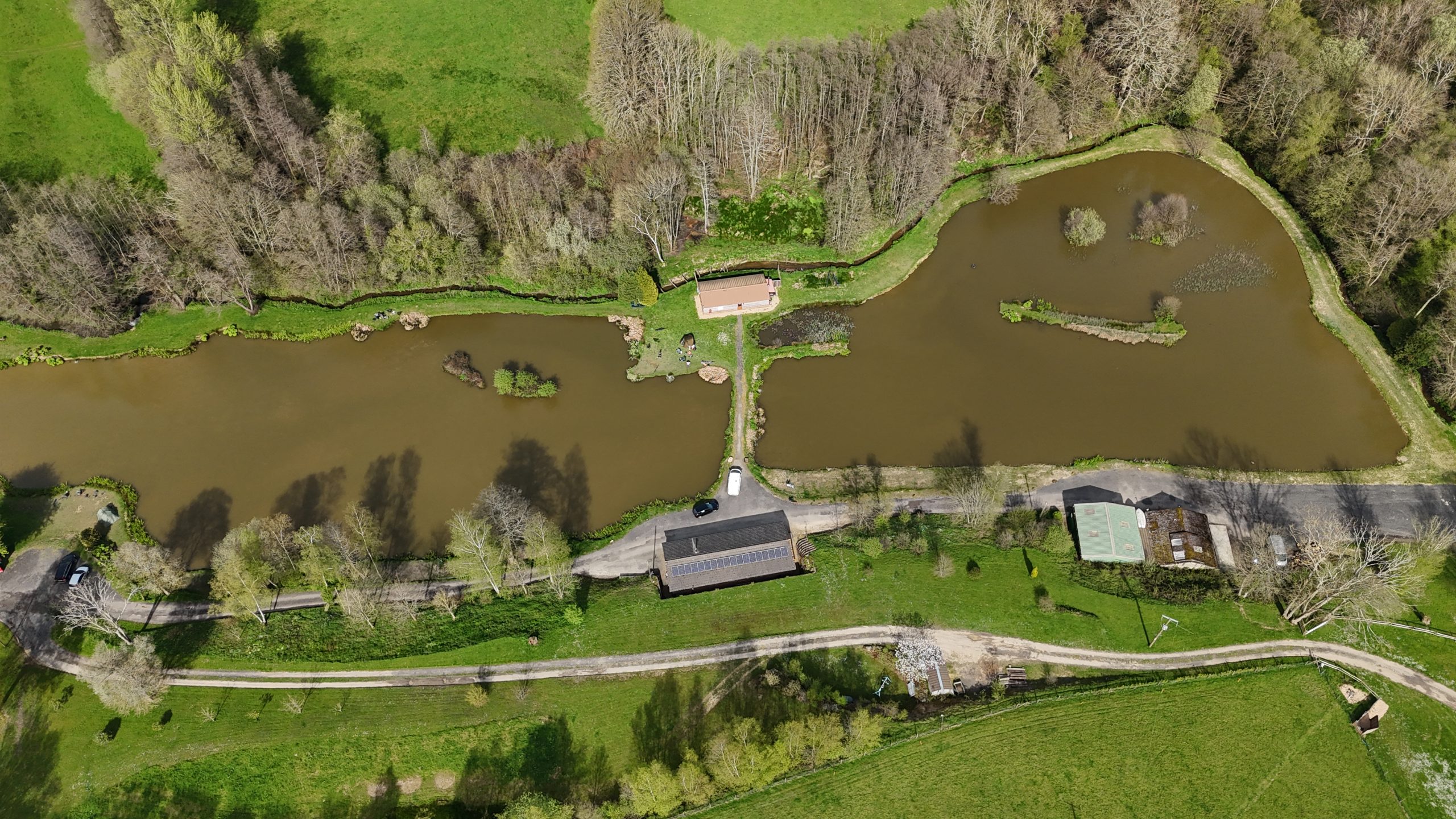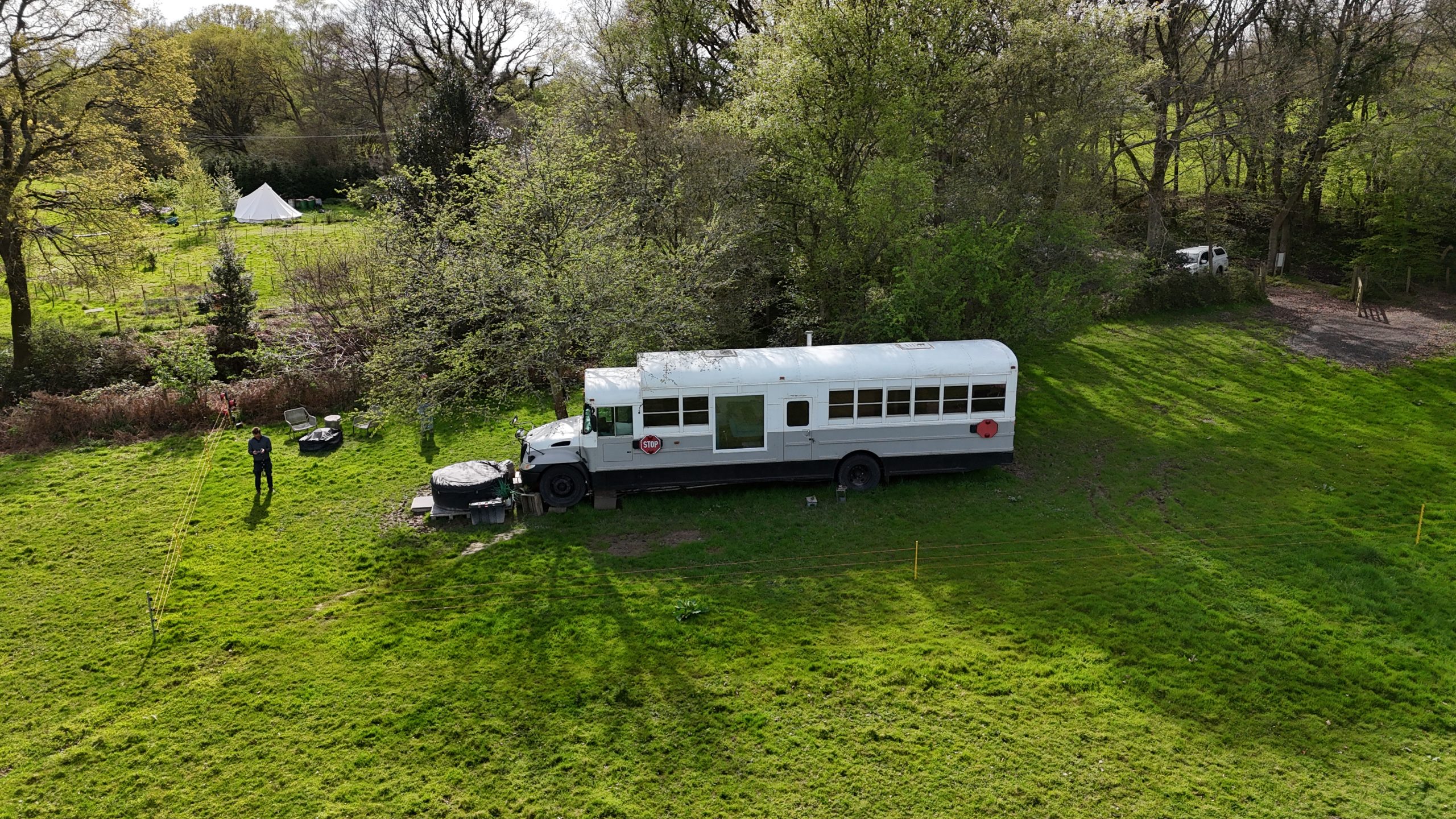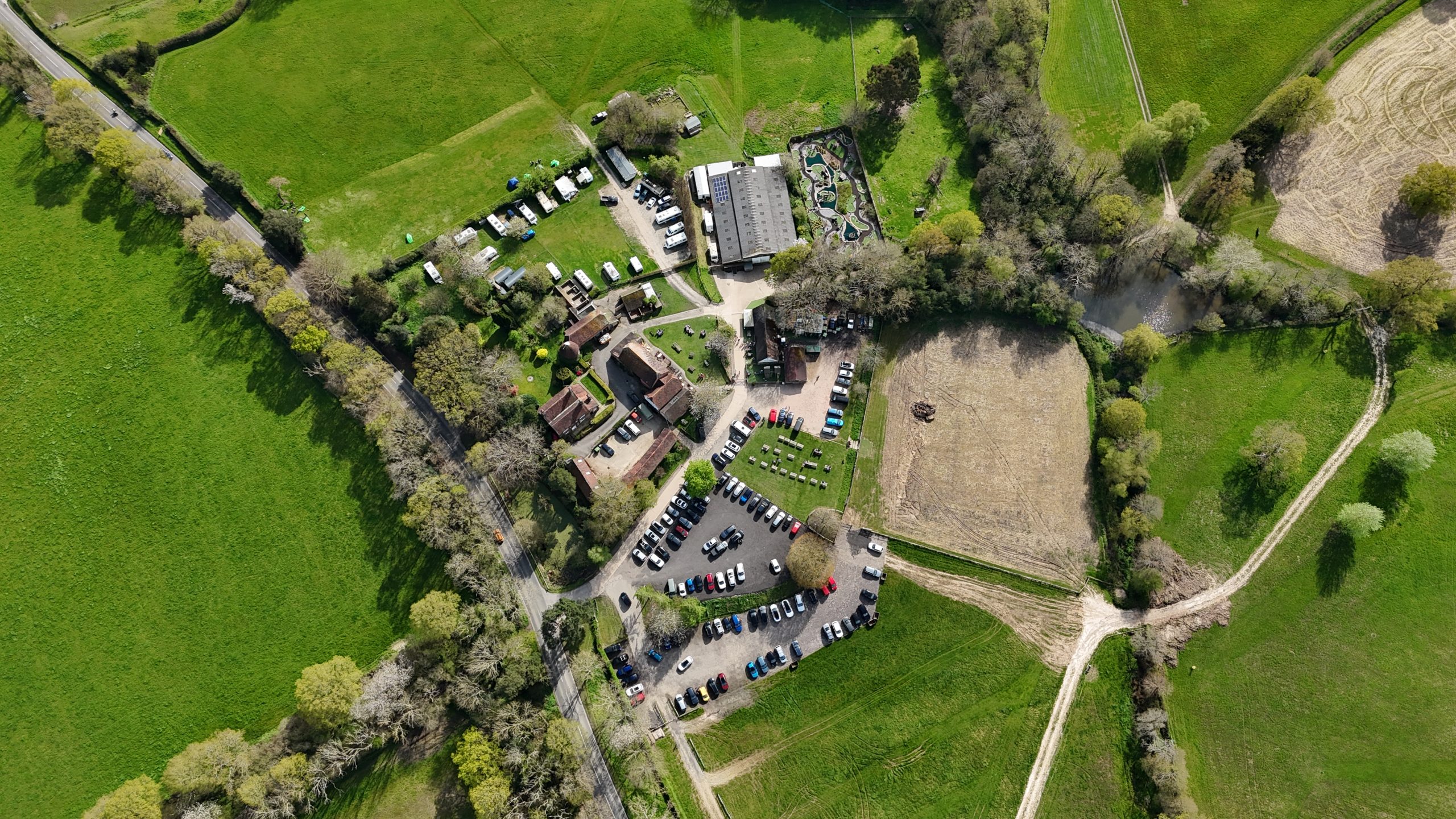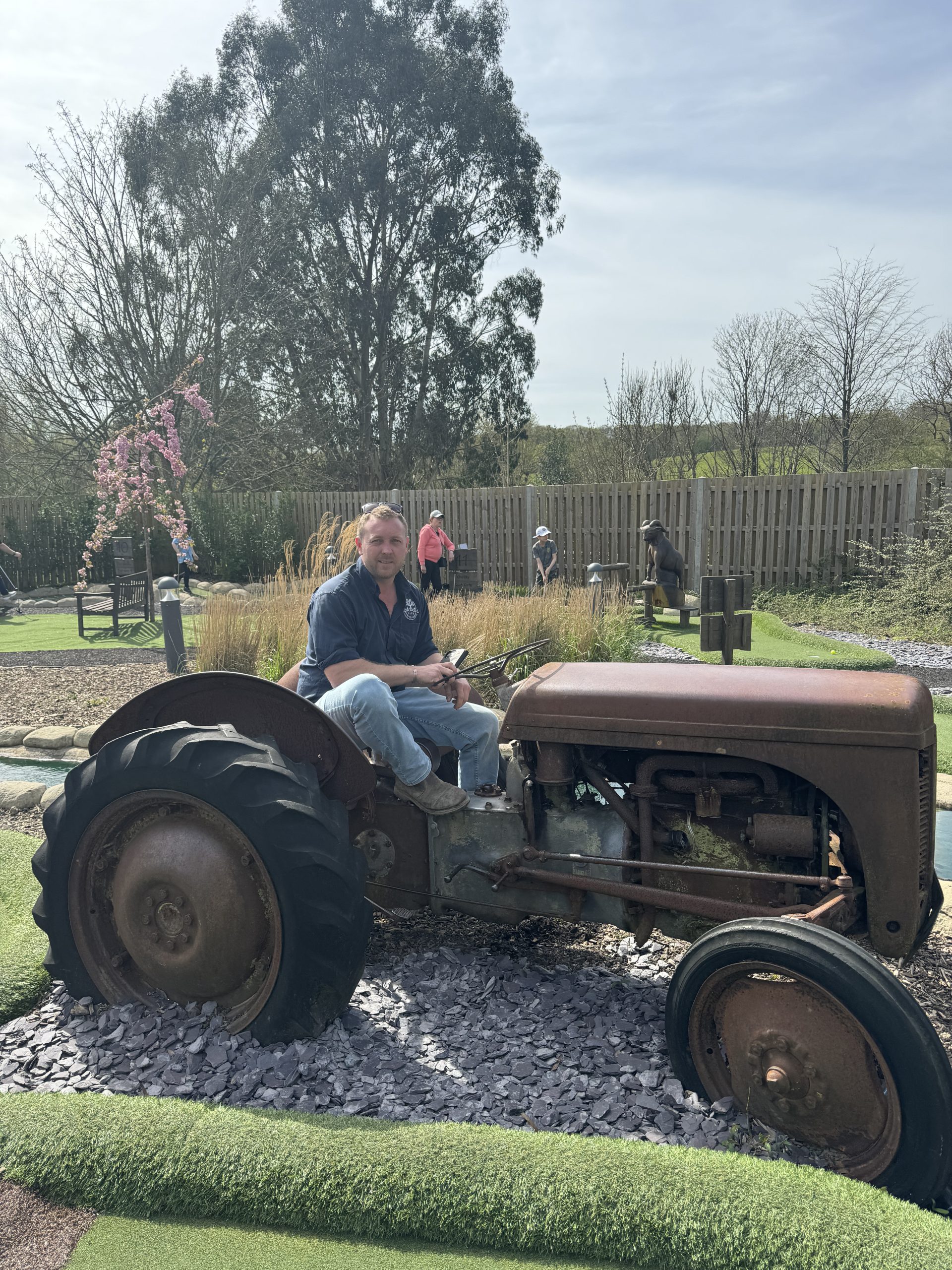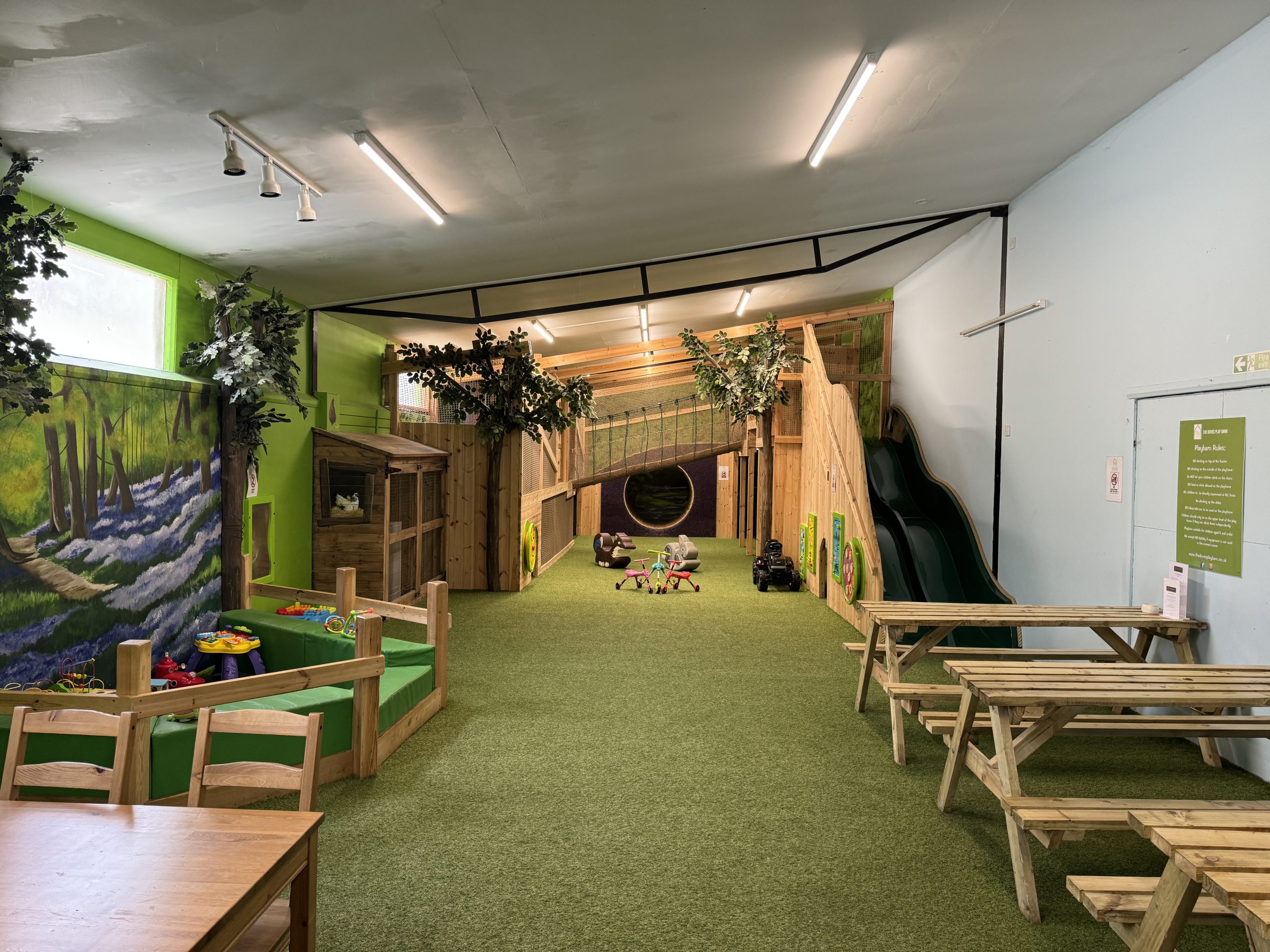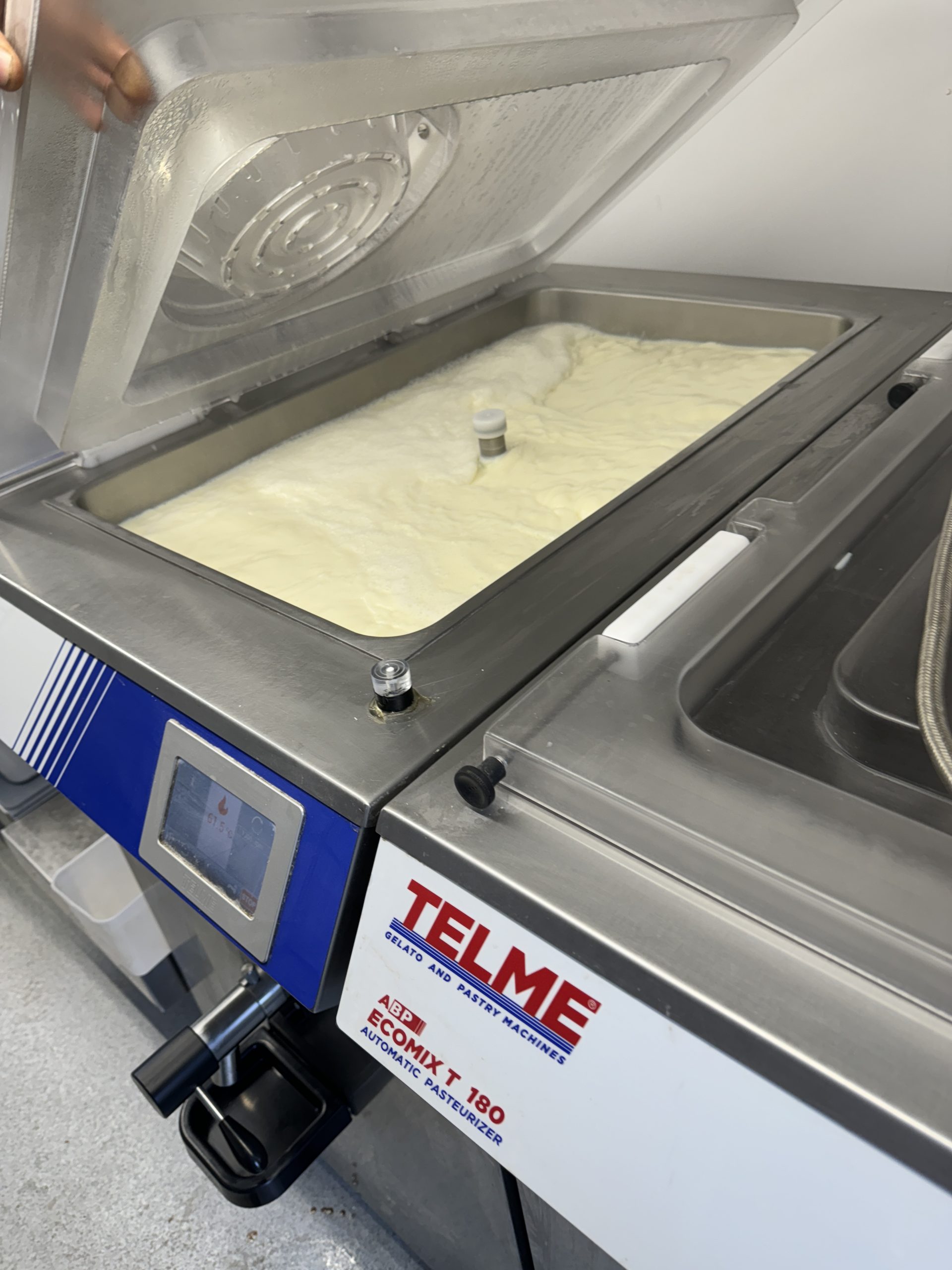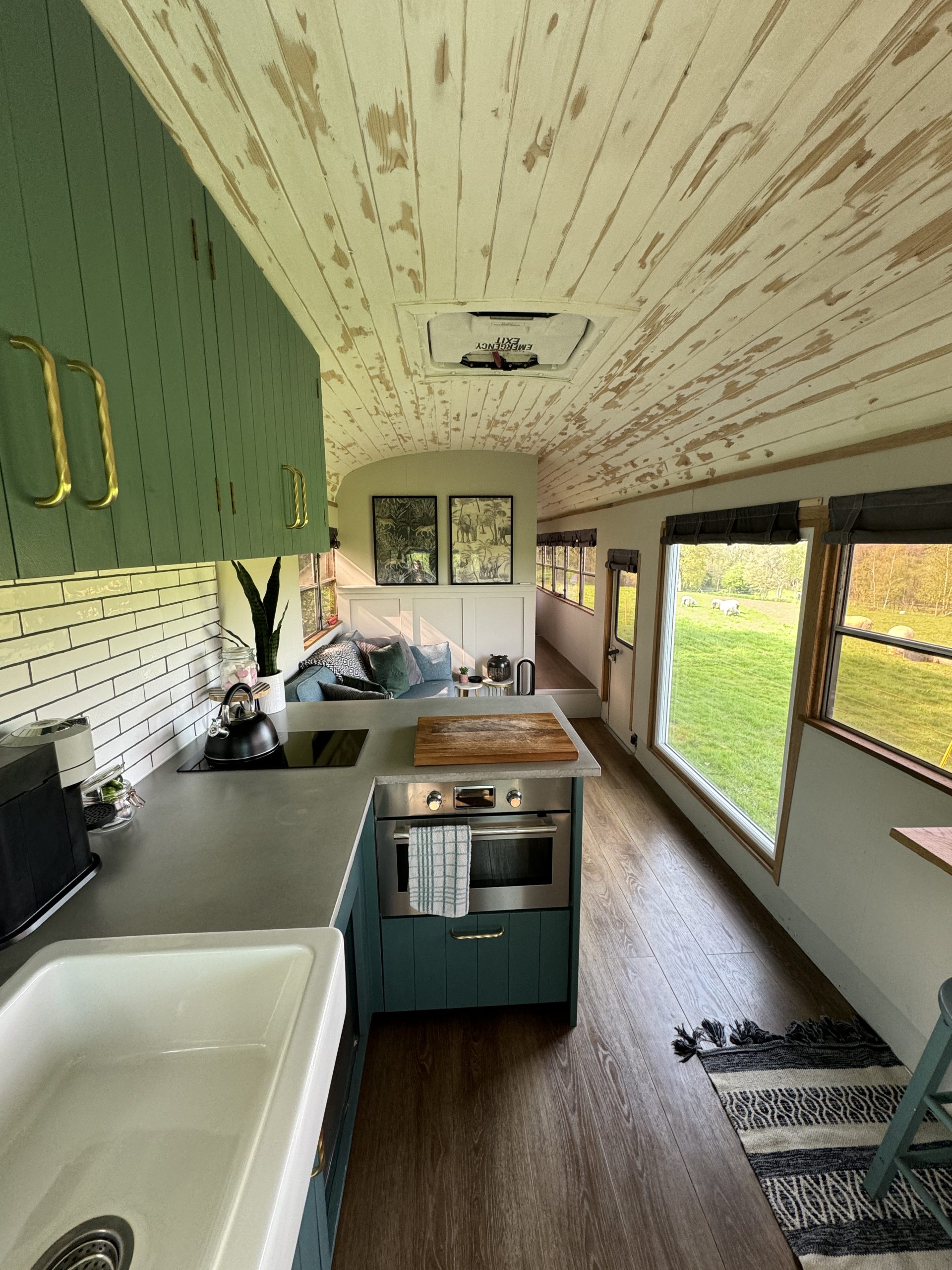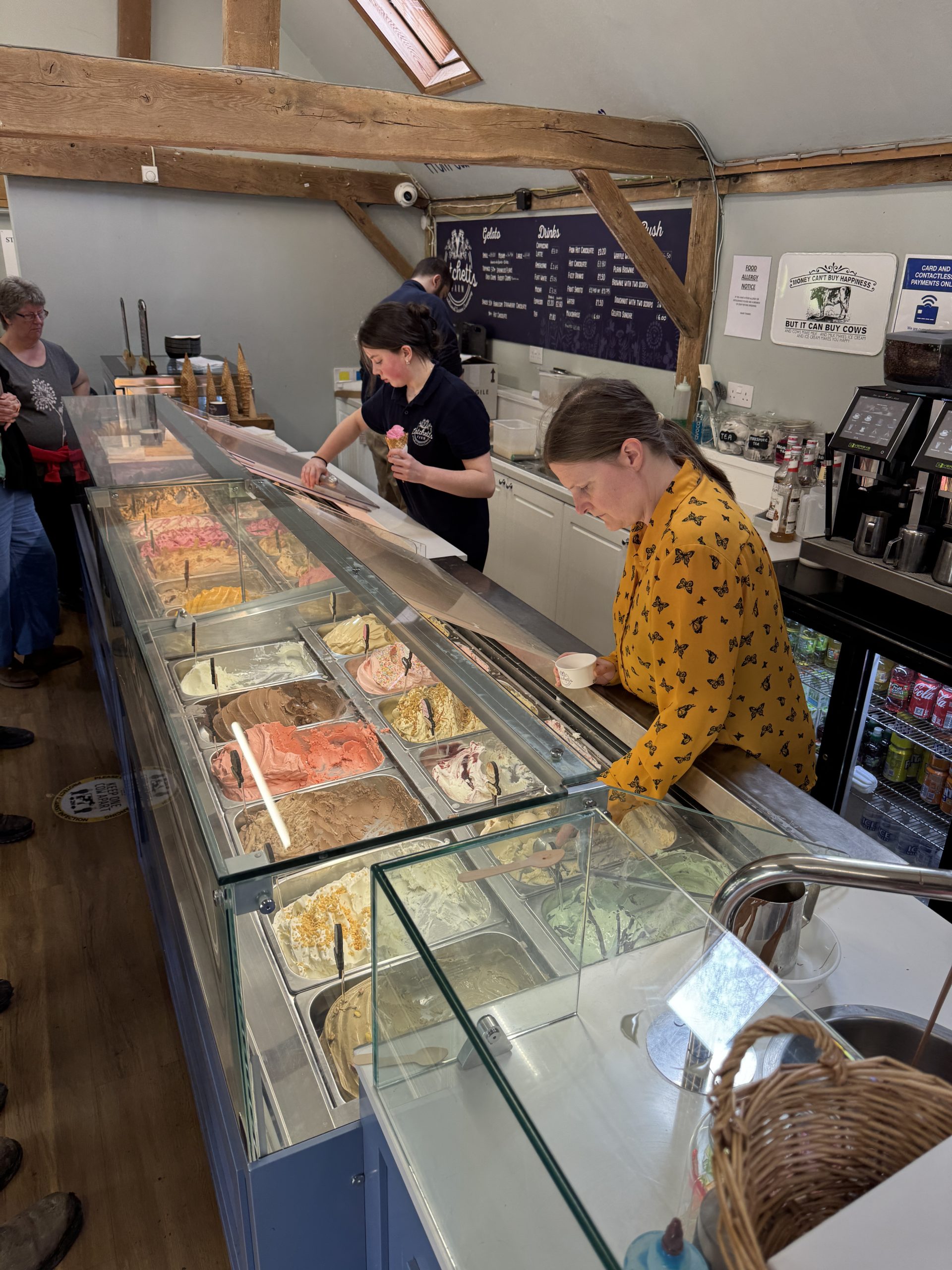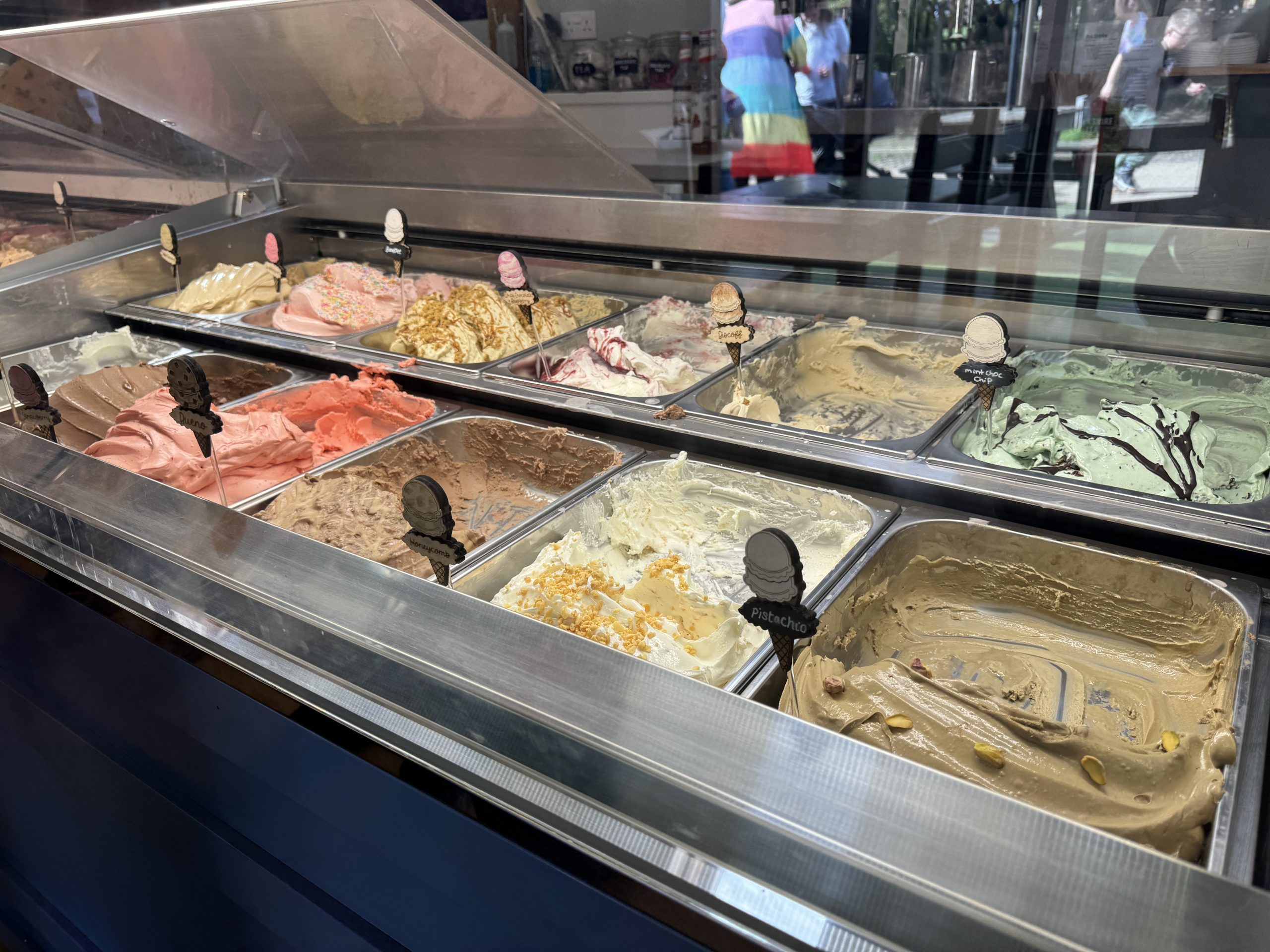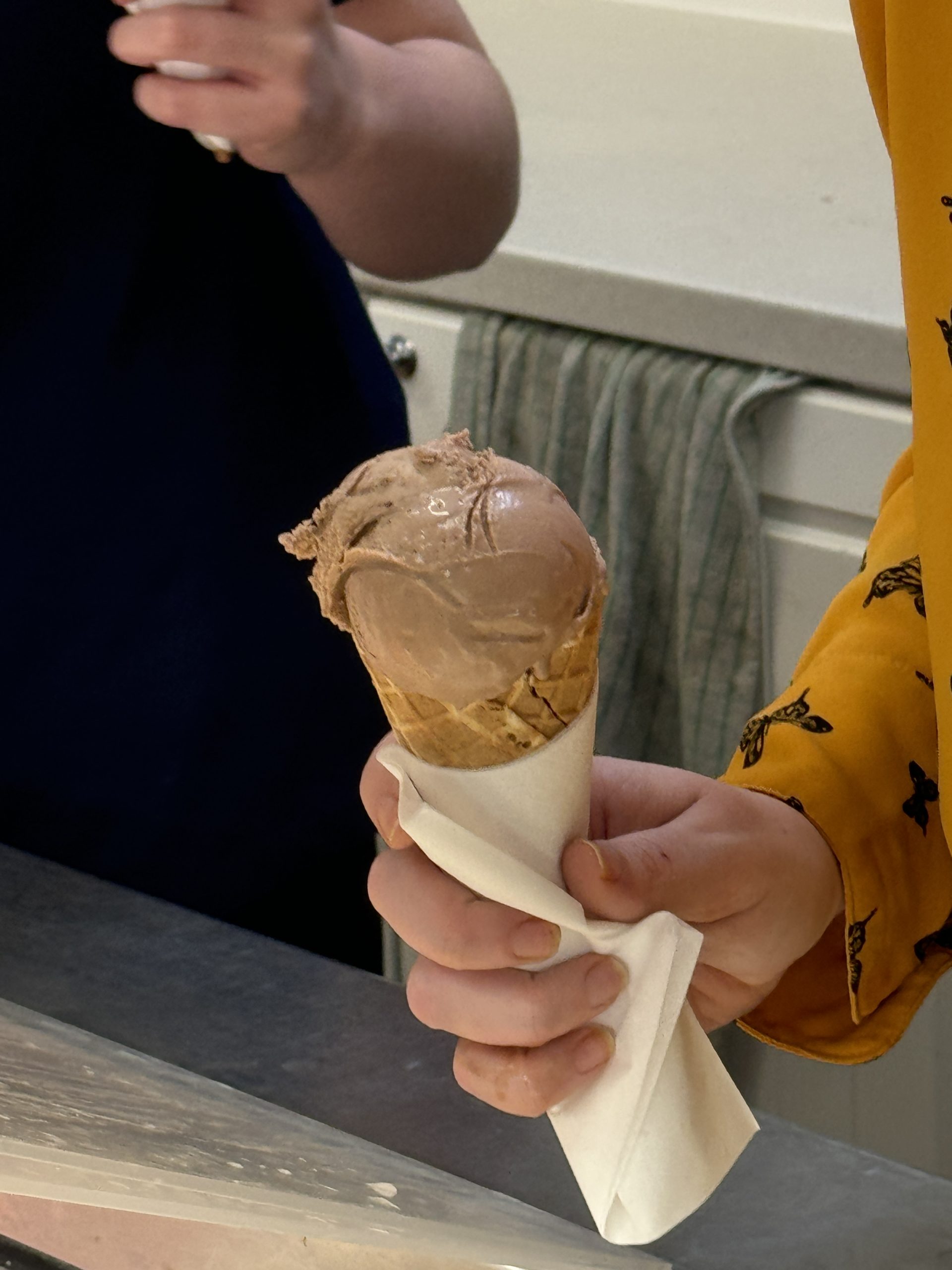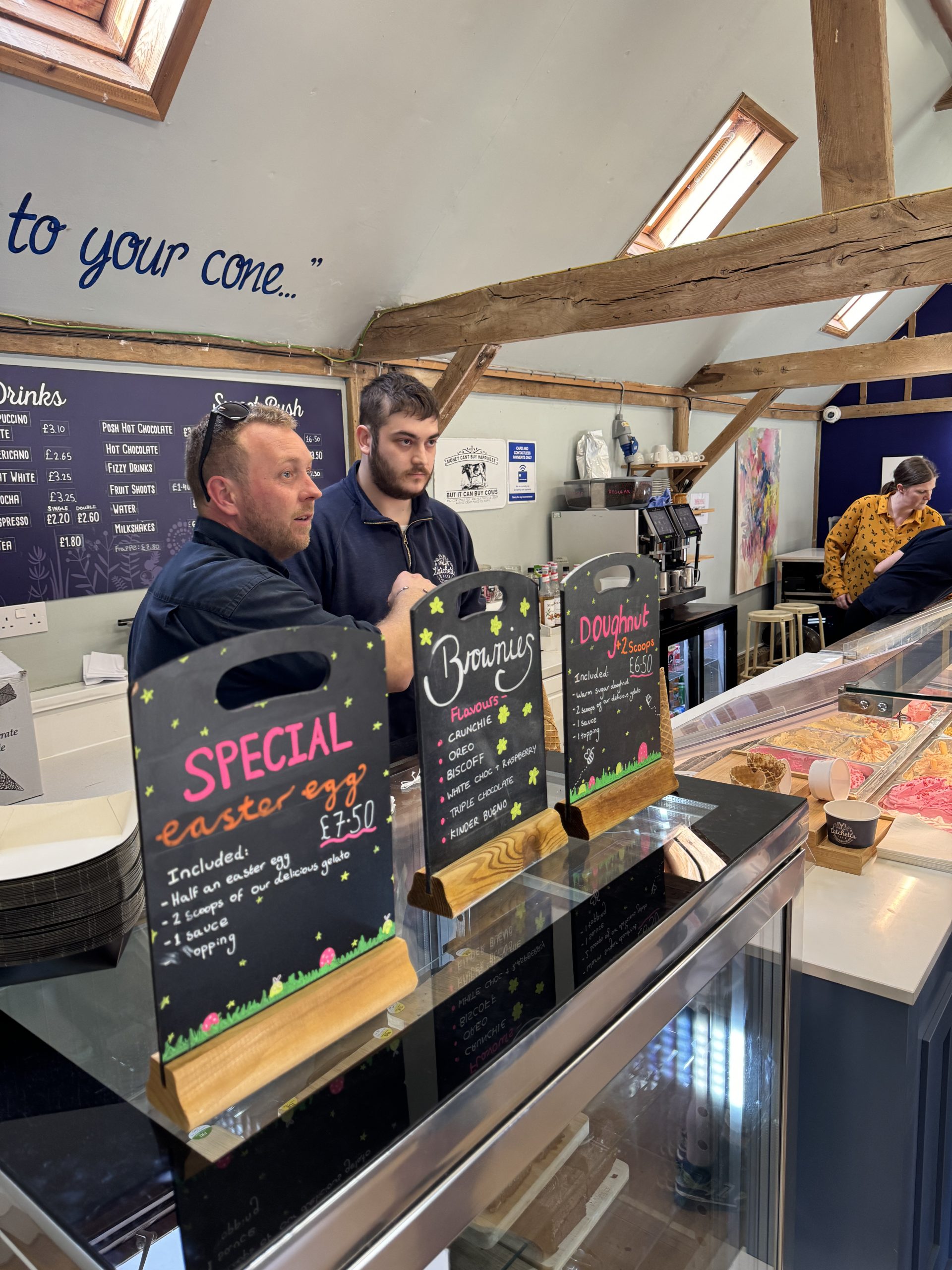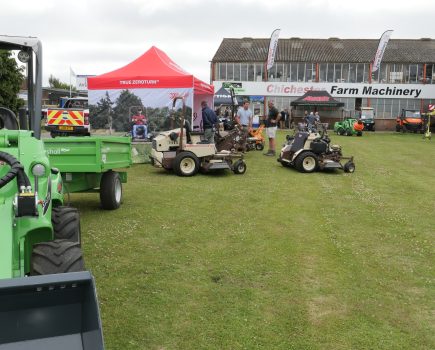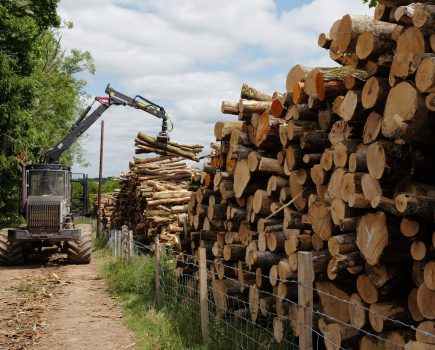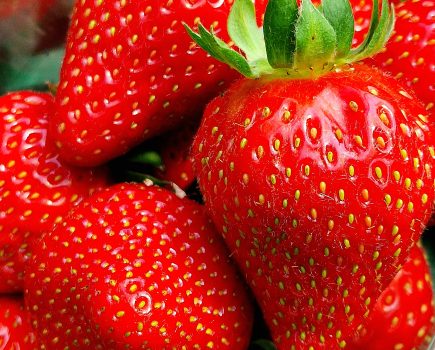This month Nigel visits “Latchetts Farm”, based at Heaven Farm in Furner’s Green, Uckfield, to meet fourth generation dairy farmer turned gelato impresario Grant Butler.
Latchetts is located on the busy A275 road between Sheffield Green and Danehill at Heaven Farm, a 100-acre farm and diversification venue owned by the Butler family.
As I arrive on a sunny and warm spring day, the farmyard is heaving with people. The large car park is nearly full, and after finding a space I make my way to the cluster of old farm buildings which houses Butler’s Pantry – a tea room, bar and soon to be open farm-to-table restaurant.
Grant comes down from his office to meet me and we sit down for a chat on one of the picnic benches located outside.
He explained that he grew up on one of the family’s dairy farms, Flitterage farm in Fletching, run by the family business FJ Butler and Sons.
At one point the family farmed 1,800 to 2,000 cows across several farms in Sussex and Dorset, he said. Most of the land was farmed on contract farming agreements, farm business tenancies and tenancies, but after suffering TB breakdowns and milk price crashes, they were forced to scale back. Grant’s dad, David Butler, ended up selling the farm in Dorset.
The family was then left with Heaven Farm, owned by Grant’s family, Flitterage Farm, Watlands Farm and Tremains Farm, a tenanted farm in Horsted Keynes run by the family business F J Butler and Sons. After exhausting all avenues to extend the tenancy on Tremains Farm, Grant began exploring diversification opportunities at Heaven Farm.
He looked at cheese, cabins and holiday lets. “Anything to bring some money in,” he said.
Spotting a gap in the market for gelato ice cream, he set up a small shop at Heaven Farm in 2019. He bought Italian gelato making equipment and started turning small batches of their British Friesian milk into fresh gelato to sell from the farm.
Grant named the business Latchetts Farm after the place where his great grandfather Jack Butler had started FJ Butler & Sons in 1949, with six cows and a bicycle.
Where a lot of dairy farms wholesale ice cream and gelato, not many do retail as they don’t want to deal with the pubic, Grant explained.
He bucked the trend and went for the retail market, which allowed him to set his own price and make a better margin.
It’s a strategy that’s paid off, and nearly five years on they make about two and half tonnes a week, with an annual footfall of around 200,000 people through the shop. In addition to retail they now wholesale to a select few places, mainly restaurants, which take large four and five-litre tubs.
Farm diversification and enterprise stacking
Farm diversification runs in the family. Grant explained that it was his grandfather John who originally opened Heaven Farm to the public after clearing the woods and creating a woodland trail in the wake of the Great Storm of 1987.
He then realised that people might want a cup of tea, so decided to convert an old stables behind the farmhouse into a tea room. Over the years the tea room has grown in popularity, receiving around 30,000 customers a year before Grant opened his gelato shop.
With Covid-19 hitting the following year, footfall jumped significantly, he remarked. With many places shut, people flocked to the farm to enjoy some time outside and an ice cream. To capitalise on the rise in demand, Grant decided to convert an existing beef barn into a soft play area, called the Doves Play Barn. It has a small toddler area for under-fives and a big inflatables park next to it.
Converting the barn and buying all the kit was a sizeable investment, around the cost of a new tractor, he said, but he described the payback time as “insane”. The inflatables were installed in December 2022 and had paid for themselves in the first year, along with all the other capital expenditure, highlighting how profitable these ventures can be.
Their next venture was a crazy golf course called the Cow Putt, which was professionally designed and installed.
Showing me around the course, Grant pointed out various bits of old farm machinery kept by his granddad, including an old grey Fergie.
He found the psychology behind the design of the course fascinating, likening it to a milking parlour and the need to minimise pinch points. He said it had been another popular attraction and it was at capacity on the day of my visit.
There is also a lot of other seasonal outdoor activities such as a maize maze, sunflower picking, pumpkin picking and frisbee golf.
The farm also has a caravan site and campsite, offering seasonal camping for 50 pitches, glamping (including an American school bus Airbnb) and a fishery across the road that the family managed to buy when it came up for sale offering “enormous marriage value”.
To help promote their business and various activities they have a modern website at www.latchetts.co.uk and use social media channels to market directly to customers.
Grant said he was nervous about the cost-of-living crisis but so far had not seen any drop in the number of customers coming to the farm.
“We don’t have any gate entry charge. You can turn up and just have an ice cream, just play golf, just have lunch. You can come and have a few hours for not a lot of money and get outside,” he said.
He admitted their location was also a big advantage.
“We’re smack in between Eastbourne and London. There’s nowhere else really until you get to Tulleys Farm, which is a very different model to this,” he said.
What’s the difference between gelato and ice cream?
Eager to learn more about gelato, I asked Grant to show me their make room, where they have four Italian TELME machines supplied by RSS Hereford, the company that designed all their ice cream making and selling areas, he said.
To make the gelato they add sugar, skimmed milk powder, dextrose and glucose to the milk and then cook it to 85 degrees to pasteurize it. The temperature is then reduced to four degrees in an hour and a half. From there it is taken out a bucket at a time to flavour before going into batch freezers.
I asked Grant what the main differences were between gelato and ice cream? There are, he said, no eggs in gelato and the fat content is a lot lower. The makers aim for around 8%, whereas ice cream is anything from 18% to 24%, he replied.
Another key difference is in the air content, which is about 20% in gelato, making it taste a lot more dense and creamy compared to ice cream, which can contain up to 60% air.
Going through into the shop, four members of staff were busy behind the counter serving customers gelato in cones and small tubs, with a sizeable queue out of the door.
Key challenges and advice to other farmers considering farm diversification
One of the main challenges of running a business this size is staffing, said Grant. He needs at least 11 members of staff on site per day and has 37 team members on the books. Due to the nature of the work a lot of the staff are quite young, he said. At times he struggled when dealing with young people but he quickly learned to delegate and now has managers in place so he can focus on growing the business.
Another challenge has been parking. Grant said the business had done everything it could to avoid putting in more hardstanding, using grass mats, but was forced to increase the amount of parking this winter after so many cars kept getting stuck. On planning, he said they were very much farmers and admitted it hadn’t always been done the right way to start with.
Grant advised farmers considering farm diversification to find a good insurance broker. They have worked with a number of brokers over the years, he said, and currently use Lycetts, which had been helpful in steering them away from potential pitfalls and providing guidance on how to comply with regulations.
When they set up their soft play barn, Lycetts recommended installing security cameras and keeping nine months of footage to avoid fraudulent claims, advice which helped when they recently received a fraudulent claim from a parent after 35 days.
Farming
Grant said the business was now farming around 600 acres in total, two-thirds of which is arable and the rest grass. He runs about 40 sucklers and plans to increase that to around 100 cows with the Stabiliser breed to supply the restaurant.
“Although it’s the backbone of where everything comes from, it’s really my hobby now as I can’t justify employing anyone. It’s my get away from this place,” he said.
Plans for the future
Next on his list of activities is a high ropes course in the woods, which Grant hopes to have installed by next summer. He also plans to improve the existing activities and add more educational elements, including growing more crops for people to see.
Before leaving I asked Grant what he hopes to achieve with his farm diversification ventures. “To earn enough money to one day return to traditional farming on a larger scale,” he replied.
Farm facts
- Butler’s Pantry, Farm Kitchen and Bar – in the process of opening a new farm-to-table restaurant
- Launched Gelato ice cream business in June 2019 under Latchetts Farm brand
- Cow Putt crazy golf course
- Doves Play Barn
- American school bus Airbnb joint venture located above fishing lakes (85% occupancy)
- Plans to install a high ropes course in the woods next summer
- Plans to expand camping and glamping
- Pumpkin patch
- Maize maze
- Gone from around 30k to 200k footfall per year
- 300 acres of arable crops, 100 acres of CS and SFI crops and remaining 200 acres of pasture.
- default
- default
- default
- default
- Grant Butler

